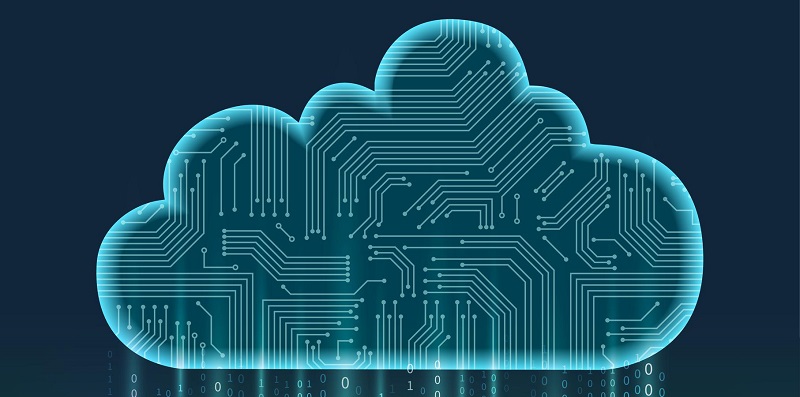As the demand for high-performance computing systems continues to surge, traditional approaches to designing and constructing such systems are proving inadequate for workloads like generative AI and large language models (LLMs). To address this challenge, Google Cloud introduces its latest offerings – Cloud TPU v5e and A3 VMs – which promise to deliver exceptional performance, cost-effectiveness, and scalability for LLMs and generative AI models.
Introducing Cloud TPU v5e
Cloud TPU v5e stands out as a game-changer in the field of AI infrastructure. This innovative solution offers up to 2.5x higher inference performance and up to 2x higher training performance per dollar, specifically designed for LLMs and generative AI models. By harnessing the power of Cloud TPU v5e, organizations can accelerate their AI workflows, reduce costs, and achieve groundbreaking results.
Cloud TPU v5e Pod Specifications
The Cloud TPU v5e pods are built to support even the most demanding AI workloads. These pods can accommodate up to 256 interconnected chips, enabling massive parallel processing. With an aggregate bandwidth surpassing 400 Tb/s and an impressive 100 petaOps of INT8 performance, the Cloud TPU v5e pods provide an unparalleled level of scalability and performance for organizations tackling complex AI challenges.
Integration with Google Kubernetes Engine (GKE)
To streamline AI workload orchestration and management, Google Cloud has made Cloud TPUs available on its Kubernetes Engine (GKE). This integration ensures seamless deployment and scalability of AI models, enabling organizations to harness the full potential of Cloud TPUs while simplifying their infrastructure management. By utilizing Cloud TPUs on GKE, businesses can optimize their AI workflows, increase productivity, and focus on innovation rather than infrastructure complexities.
Training options with Vertex AI
Google Cloud’s Vertex AI offers a comprehensive training platform that supports diverse frameworks and libraries through Cloud TPU VMs. This means organizations have the flexibility to choose the tools and frameworks that best suit their needs while still benefiting from the power of Cloud TPUs. The combination of Vertex AI and Cloud TPU VMs empowers data scientists and developers to train, optimize, and deploy AI models efficiently.
Upcoming PyTorch/XLA 2.1 release
The PyTorch/XLA 2.1 release is just around the corner, bringing with it support for Cloud TPU v5e and enhanced model/data parallelism for large-scale model training. With these advancements, organizations using PyTorch can unlock the full potential of Cloud TPUs and take their AI capabilities to new heights. The upcoming release further solidifies Google Cloud’s commitment to providing cutting-edge technologies that meet the evolving needs of the AI community.
Introduction of A3 VMs with NVIDIA’s A100 Tensor Core GPUs
In addition to Cloud TPU v5e, Google Cloud introduces the new A3 VMs powered by NVIDIA’s H100 Tensor Core GPUs. These VMs are purpose-built to cater to demanding generative AI workloads and LLMs. With A3 VMs, businesses can achieve 3x faster training and enjoy 10x greater networking bandwidth compared to previous iterations. These advancements allow organizations to accelerate their AI model development, enabling them to bring innovative solutions to market rapidly.
Strengthening Google Cloud’s leadership in AI infrastructure
With the introduction of Cloud TPU v5e, Cloud TPU integration with GKE, Vertex AI’s training capabilities, and A3 VMs, Google Cloud aims to solidify its position as a leader in AI infrastructure. By providing innovative and scalable solutions, Google Cloud empowers innovators and enterprises to tackle complex AI challenges head-on as they strive to develop the most advanced AI models and solutions.
Speed benchmarks of Google Cloud TPU v5e
Benchmark tests have yielded remarkable results, demonstrating a 5X increase in the speed of AI models when training and running on Google Cloud TPU v5e. These benchmarks highlight the transformative impact of Cloud TPU v5e on organizations’ AI workflows. By leveraging the increased performance and efficiency of Cloud TPU v5e, businesses can accelerate their AI initiatives, improve time-to-market, and gain a competitive edge in the rapidly evolving AI landscape.
Google Cloud’s latest offerings, including Cloud TPU v5e and A3 VMs, revolutionize AI infrastructure by providing unmatched performance, scalability, and cost-effectiveness. With Cloud TPU v5e, organizations can achieve exceptional inference and training performance, unlocking possibilities for advanced AI model development. Integration with GKE, training options with Vertex AI, and the upcoming PyTorch/XLA 2.1 release further enhance the capabilities of Cloud TPUs, enabling organizations to push the boundaries of AI innovation. The A3 VMs, powered by NVIDIA’s H100 Tensor Core GPUs, deliver superior speed and networking bandwidth, making them ideal for demanding generative AI workloads and LLMs. Google Cloud’s commitment to advancing AI infrastructure empowers businesses and researchers to forge the most cutting-edge AI models and solutions, solidifying its leadership in the AI ecosystem.

